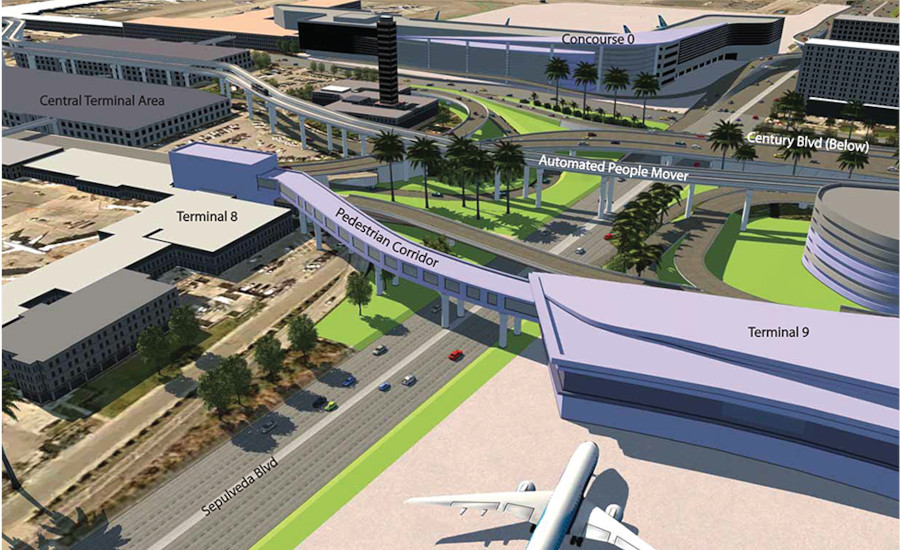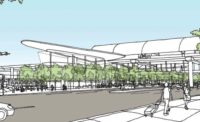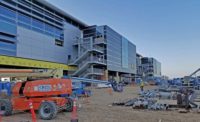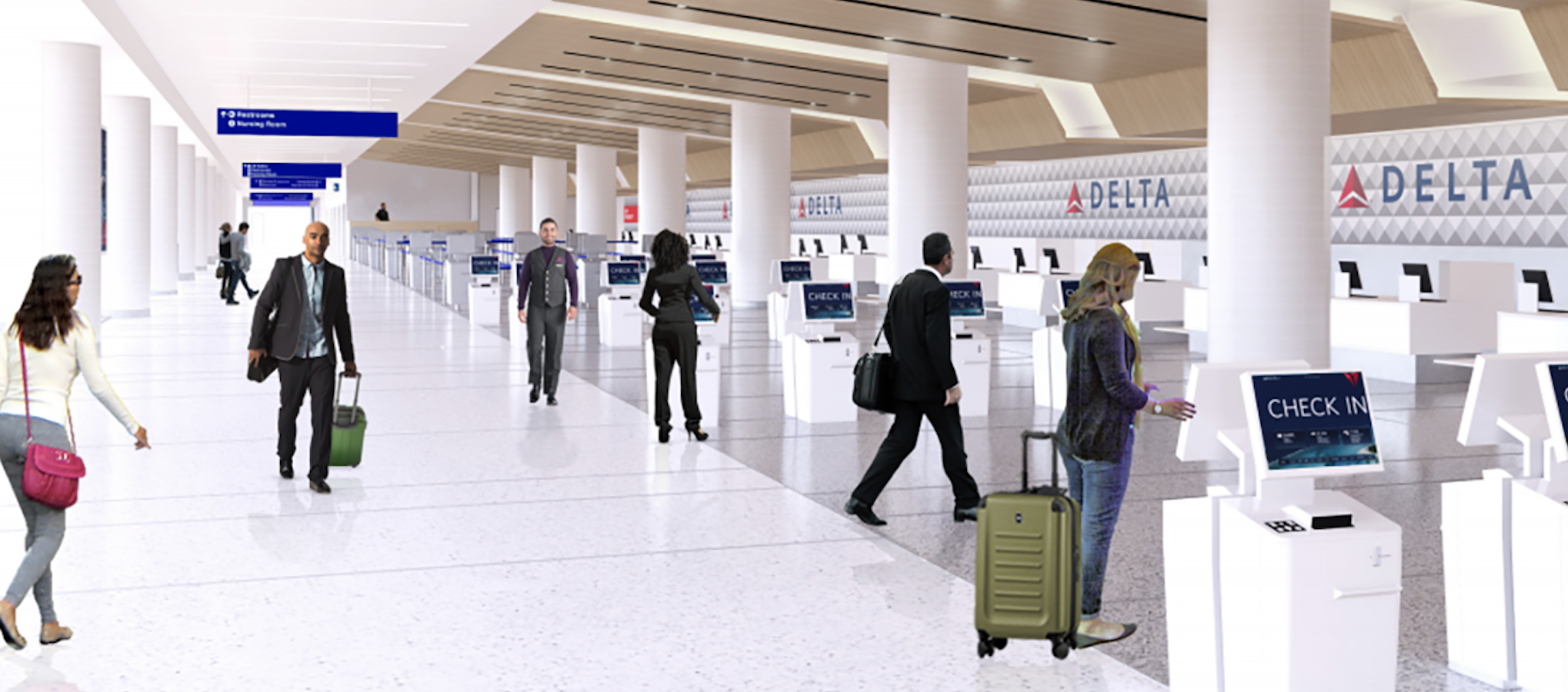HDR announced May 23 that it was selected by Los Angeles World Airports to lead a design-build team providing program management and construction management services for the landside portion of the multi-billion dollar Airfield and Terminal Modernization Project at Los Angeles International Airport.
The project follows the $5.5-billion Landside Modernization Program that included the $2-billion, 2.25-mile automated people mover that will connect three on-airport stations to Metro Rail and transit services; a $2-billion consolidated rental car facility; the $294-million Intermodal Transportation Facility-West; $490 million in “terminal vertical cores” that will allow pedestrian bridges to connect people-mover stations to terminals; and roadway improvements.
The even-more ambitious terminal project, which could be roughly $15 billion, will reconfigure taxiways and runway exits to meet current Federal Aviation Administration design standards. It will improve airfield and terminal areas that stay within the airport’s existing footprint, and feature landside (roadway) improvements that help reduce airport-related congestion and back-ups on public streets.
The project includes a new terminal with 12 to 18 new gates; development of Concourse 0, with six to nine net new gates and airfield upgrades; and a new elevated roadway system and numerous roadway improvements.
The project "will dramatically improve the passenger experience at LAX and requires a top-notch team to meet its aggressive timeline ahead of the 2028 Summer Olympics,” to be held in Los Angeles, said HDR principal program manager and firm team leader Scott Jarvis in a news release. He said he is focused on making the transition as “seamless as possible for travelers.”
The landside portion of the project, costing more than $1 billion, will be delivered through progressive design-build, with HDR assisting Los Angeles World Airports in overall program management. The job will design and construct more than 18 lane-miles of roadway, including some that are elevated to separate local traffic from airport traffic to reduce neighborhood congestion. The roadways will provide dedicated access to the airport's Central Terminal Area and the new Terminal 9, which is also part of the overall modernization.
The landside program also includes a new people mover train station at Terminal 9 that will link to regional mass transit, and a pedestrian corridor over busy Sepulveda Boulevard between Terminals 8 and 9.
HDR’s project role includes mapping, reviewing and analyzing deliverables from the design-builder, helping establish information sharing processes, monitoring construction work for safety and ensuring that contract requirements are met during construction. The company says it plans to exceed the Los Angeles World Airports goal that 15% of its team be made up of disadvantaged business enterprises.
The project will be divided into two phases, consisting of design and preconstruction services, followed by construction. Airport officials say it is too early to tell when construction will officially begin, but they expect work to complete in time for the 2028 Olympics.
“HDR has already shown we can deliver for Los Angeles World Airports through our design and management work on its Automated People Mover,” said HDR aviation director Bill Peduzzi in a statement. The modernization program's landside project "will continue HDR’s involvement in the transformation of air travel to and from Los Angeles,” he added.






Post a comment to this article
Report Abusive Comment